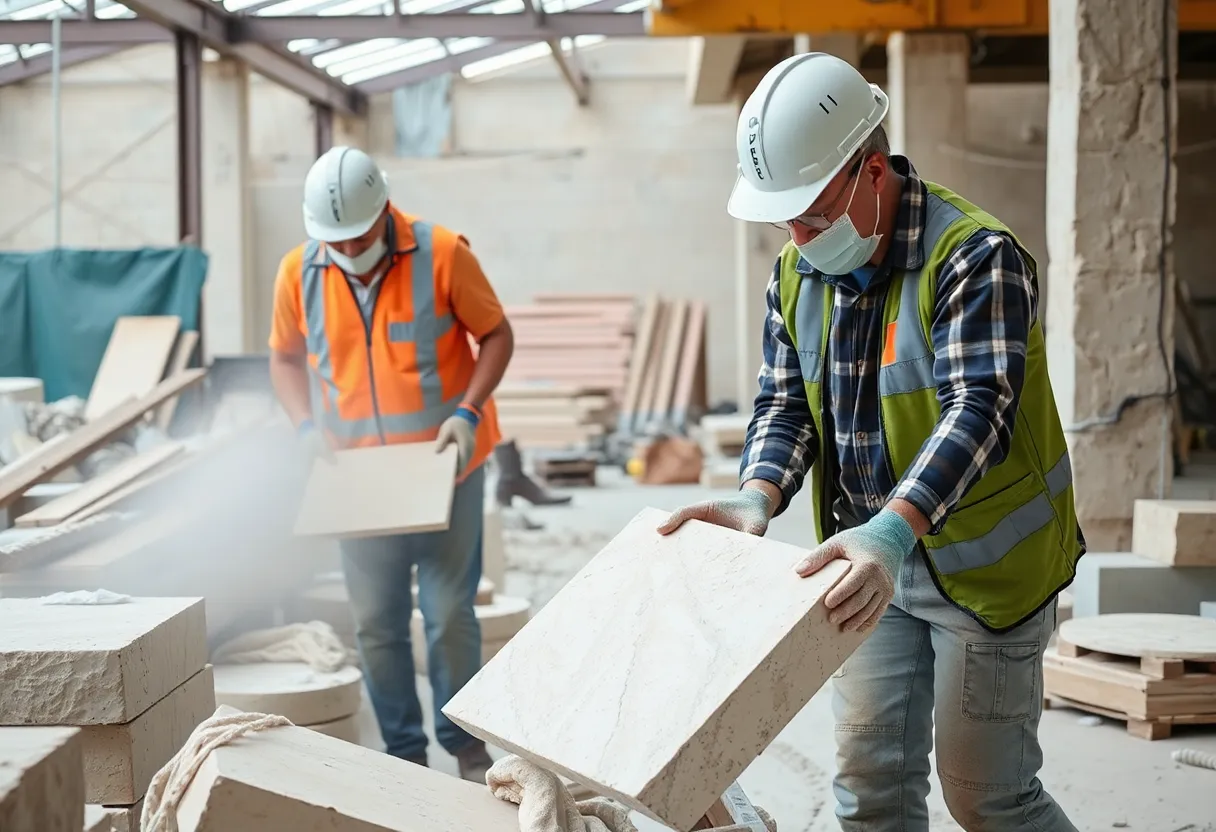News Summary
The rise in silicosis cases linked to artificial stone exposure has prompted urgent calls for regulatory changes. With alarming statistics indicating that young workers are being affected, experts warn of a looming health crisis. Improved safety measures and awareness campaigns are needed to mitigate risks associated with silica dust exposure in workplaces.
Urgent Call to Action as Silicosis Cases Surge from Artificial Stone Exposure
The grim reality of silicosis, an incurable lung disease, has been thrust into the spotlight following alarming reports of occupational exposure amidst rising demand for artificial stone. For over a decade, silicosis has claimed lives and wreaked havoc on families across the UK, with the latest evidence revealing a disturbing connection to engineered stone materials.
An Unseen Killer in Workplaces
Recent cases have sparked serious concerns about the health ramifications associated with silica dust arising from artificial stone, spiking the call for immediate regulatory changes. Silicosis, a disease caused by inhaling fine particles from materials high in silica, can lead to debilitating respiratory failures and proven fatalities, as evidenced by tragic stories from families who have lost loved ones.
George Elliott, a 64-year-old stonemason from Croydon, succumbed to silicosis after three decades of working in environments rife with authentic stone and, tragically, inadequate protective equipment. His death is part of a concerning trend—an average of 12 silicosis-related deaths were recorded annually in the UK between 2013 and 2023, but recent developments hint at a looming crisis as silicosis cases linked to artificial stone have emerged.
Shocking Statistics Highlight Growing Risks
In the UK alone, 18 documented cases of silicosis linked to artificial stone have emerged, with victims as young as 24. Two cases have resulted in death, while others face the daunting possibility of lung transplants. The testimony of Marek Marzec, a father who passed away at 48 due to respiratory failure from engineered quartz dust, adds a personal dimension to the data and underscores the urgent need for action.
Dr. Johanna Feary, an expert in respiratory diseases, has cautioned that the demand for artificial stone will likely exacerbate the current health crisis. The first confirmed UK case of silicosis due to artificial stone was reported just this year, raising alarms that more cases are on the horizon.
The Silent Suffering of Workers
Sadly, silicosis symptoms often remain hidden for years before making their appearance. Issues such as persistent cough, shortness of breath, and fatigue develop long after the initial exposure, creating a ticking time bomb for unsuspecting workers. George’s journey began with escalating respiratory issues, leading to an interstitial lung disease diagnosis in April 2023. By October, the possibility of a lung transplant slipped away as his condition rapidly deteriorated, culminating in his tragic death on November 22, 2023.
An inquest has since determined that George died due to silicosis rooted in occupational exposure, highlighting the critical failures of employers who neglect their responsibility to safeguard workers. Many companies continue to provide insufficient personal protective equipment, further endangering their employees.
Health Risks Beyond Silicosis
The ramifications of silicosis extend far beyond lung disease. Those affected are at increased risk for severe health complications, including tuberculosis and lung cancer. Experts agree that the disease is generally preventable with proper measures, yet the lack of stringent regulations has allowed it to persist.
In response to this emerging health crisis, there are burgeoning calls for the UK to reevaluate existing safety regulations surrounding silica dust, which currently permits exposures up to 0.1 mg/m3. Experts argue that this threshold needs to be tightened to prevent further tragedies.
Path Forward: Commit to Safety
The approach to mitigating silicosis includes improved ventilation, the use of water suppression methods, and ensuring proper personal protective equipment is in place. One forward-thinking kitchen company has already taken the initiative to discontinue the use of high-silica engineered stone due to burgeoning concerns over worker safety.
Public consciousness around these issues is critical; individuals are urged to inquire about the silica content of engineered stones prior to use. Awareness of the health risks associated with artificial stone primarily lies in its production and installation phases. Once installed, risks diminish significantly.
As alarming statistics and personal accounts continue to surface, the necessity for new regulations and safety guidelines becomes increasingly apparent. The fight against silicosis and the dangers of silica exposure must take precedence to safeguard the health of workers and prevent further loss of life.
Deeper Dive: News & Info About This Topic
HERE Resources
The Minns Labor Government Unveils Lung Health Mobile Clinic to Combat Dust Diseases
The Asbestos Litigation Crisis: A Heavy Toll on Small Businesses in California
Contractor Sentenced to 10 Years for Asbestos Fraud and Elder Abuse
The Looming Threat: Silicosis Claims on the Rise
Crim Theater Gets Facelift Amid Asbestos Concerns
As Legal Storms Brew Over Talc Products, New FDA Rules May Change the Landscape
Asbestos Traces Linger: The Long Shadow of 9/11 on Public Health
Rising Concerns Over Silicosis Compensation Claims in the UK
Additional Resources
- The Guardian: UK Urged to Consider Ban on Artificial Stone Worktops Over Silicosis Risk
- DW: Why Silica Dust Could Become the New Asbestos Health Risk
- House Beautiful: Silicosis and Artificial Stone Worktops
- Science Focus: Your Kitchen Worktop Could Be Causing Incurable Lung Disease
- Wikipedia: Silicosis
- Google Search: Silicosis
- Google Scholar: Silicosis
- Encyclopedia Britannica: Silicosis
- Google News: Silicosis



















